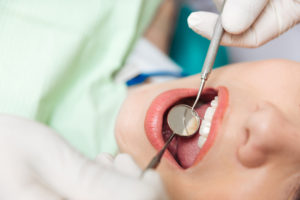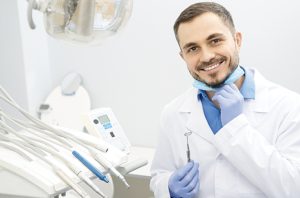Endodontics is a branch of dentistry that deals with dental pulp and the tissues that surround the roots of a tooth. Essentially, this treatment is root canal treatment, but it goes a lot deeper than that. Endodontic treatment treats the inside of the tooth, more specifically the soft pulp tissue. This treatment really saves teeth, so an endodontist specializes in helping to save teeth.
Becoming an endodontist requires one to complete at least two years or more of advanced training in this area following dental school. There are a lot of routine endodontic procedures and there are a lot of complex and very difficult procedures that fall under the endodontic field.
An endodontist is an expert that can manage a large range of difficult endodontic problems competently and efficiently. There are a lot of specialized techniques and advanced technologies that are used by endodontists that allow them to have a very accurate view of the inside of the tooth. Being able to have a precise look inside the tooth allows the endodontist to not only treat the tooth, but to do so speedily and comfortably as well.
When looking at endodontics we see the practice involves the practice of clinical sciences along with basic sciences of dental pulp, the etiology, analysis, deterrence, and treatment of diseases and also injuries of the dental pulp along with other conditions dealing in the periradicular area.
Dental pulp is the part that you will find in the center of your tooth. This area is made up of cells that are called odontoblasts and also made up of living connective tissue. The dental pulp is actually the neurovascular bundle that is central to each tooth; and this is for primary teeth as well as permanent teeth. The bundle that makes up the pulp includes the following: central pulp chamber, pulp horns, and also radicular canals.
- Central Pulp Chamber: The central pulp chamber is located under the dentin layer, and this is the space where the dental pulp lives. Nerves, blood vessels, and connective tissue all pass through the central pulp chamber in order to reach the interior area of the tooth.
- Pulp Horns: The pulp horns are points wherein which the pulp chamber extends towards the cusps of the tooth. There are orifices at the bottom of pulp chamber; these orifices allow fibers to enter the chamber through the roots of the tooth. There is generally one horn per functional cusp. In younger incisors, it will be three pulp horns.
- Radicular Canals: The radicular canal is the lateral pat of the spinal canal that contains the spinal nerve root from the point of emergence through the Dural envelope which includes the intervertebral foramen.
The dental pulp has a background that is similar to that of dentin. Both happen to be derived from the dental papilla of the tooth germ. During odontogenesis, when the dentin forms around the dental papilla, the innermost tissue is considered pulp.
There are 4 main stages of tooth development:
- Bud stage
- Cap stage
- Bell stage
- Crown stage
The first signs of tooth development are known to be as early as the 6th week of intrauterine life. The oral epithelium begins to multiply and invaginates into ectomesenchyme cells which give rise to dental lamina. The dental lamina is the origin of the tooth bud. The bud stage progresses onto cap stage when the epithelium forms the enamel organ. The ectomesenchyme cells condense further and become dental papilla. Together, the epithelial enamel organ and ectomesenchymal dental papilla and follicle form the tooth germ. The dental papilla is the origin of dental pulp. Cells at the periphery of the dental papilla undergo cell division and differentiation to become odontoblasts. Pulpoblasts forms in the middle of the pulp. This completes the formation of the pulp. The dental pulp is essentially a mature dental papilla.
The development of dental pulp can also be split into two stages:
The coronal pulp development (near the crown of tooth) and root pulp development (apex of tooth).
The pulp develops 4 regions from the periphery to the central pulp:
- Region 1: Odontoblast layer
- Region 2: Cell free zone – likely to be an artefact
- Region 3: Cell rich zone
- Region 4: Pulp core
Endodontics is important in many various aspects. It really involves either preserving part of the dental pulp, or maybe even all of the dental pulp. It can even be that all of the pulp needs to be removed. This can happen when there is disease found that is irreversible. Some of these include teeth that are irreversibly inflamed and also teeth that have infected pulpal tissue. Endodontics involves treatment when there is dental pulp present, but this isn’t the only time treatment is involved. Endodontics treatment is also needed when preserving teeth that have failed to respond to non-surgical endodontic treatment, or even for teeth that have developed new lesions.
While this may not be known, endodontic treatment happens to be one of the most common procedures. Whenever the dental pulp becomes diseased or injured, endodontic treatment is required in order to save the truth. Here are some of the procedures that will fall under the umbrella of the endodontic portion of the dental field.
















